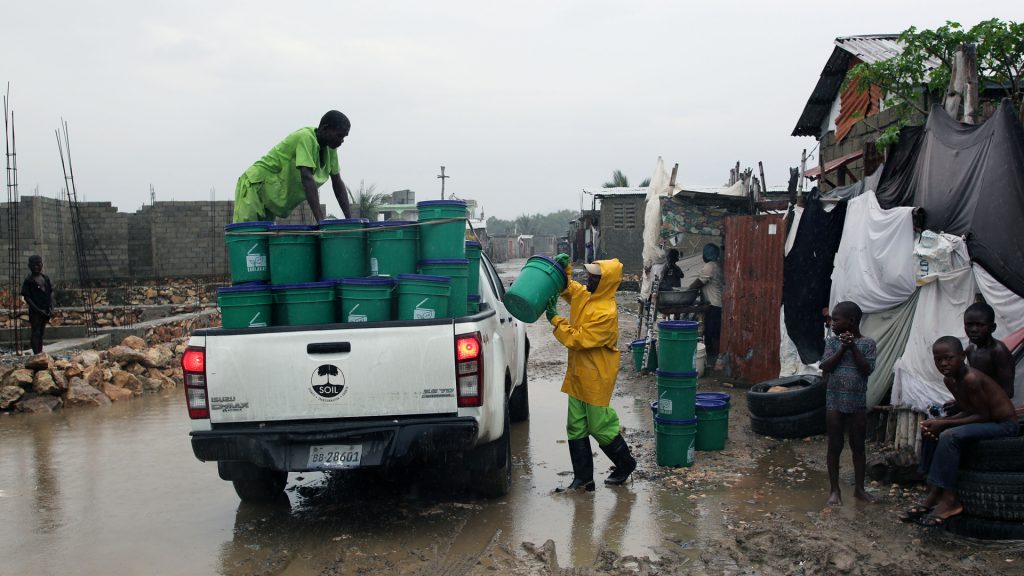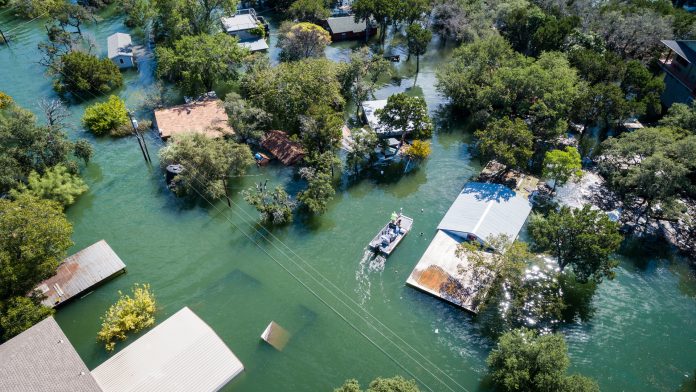Dr Hamid Mehmood, Senior Researcher at the UNU Institute for Water, Environment and Health, spoke to Innovation News Network about the development of a new flood mapping tool to mitigate water-related natural disasters.
The frequency and intensity of water-related natural disasters is continually increasing as a result of global warming. According to the World Meteorological Organization, the number of days of heavy rainfall leading to severe weather warnings could rise by three days per year in the UK.1 The data shows that, over the last 50 years, weather, climate, and water hazards accounted for 50% of all disasters.2
Due to the increasing threat of water-related natural disasters, there is a call for new technology to mitigate the associated risks. In a bid to address flood-related information gaps in the current risk-management systems, researchers from the UNU Institute for Water, Environment and Health have developed a new tool that generates instant, accurate street-level resolution maps of floods worldwide since 1985. Here, Dr Hamid Mehmood, Senior Researcher at the UNU Institute for Water, Environment and Health, discusses this new technology – the World Flood Mapping Tool – further.
Can you provide a general overview of the work of the UNU Institute for Water, Environment and Health? What are your current priorities?
In response to an emerging concern about the growing global water crisis, and its harmful impact on human and environmental health and sustainable development, the United Nations University (UNU) created the UNU Institute for Water, Environment and Health (UNU-INWEH) in 1996, with core funding from the Government of Canada.
Since then, UNU-INWEH has established a reputation for timely, clear, and rigorous research that is directly relevant to major regional and global water policy debates. With challenges to water security rapidly growing and further exacerbated by shifts in global water distribution patterns due to climate change, the work of UNU-INWEH has become even more relevant and vital.
UNU has a particular mandate to address the concerns and needs of developing countries, and to support the growth of academic and scientific communities worldwide. This is where our dual identity, as a think tank within the United Nations (UN) system and as an institution of higher education, makes us particularly useful. We are well placed to serve as a translator of evidence-based research for UN and international policy makers, and as a bridge between the UN and the global academic world.
UNU-INWEH plays these roles on behalf of UNU within the water domain. The Institute has made major contributions to advancing global policy-relevant water research and contributed to several major UN events and reports, including the 2018 High-Level Political Forum on Sustainable Development and the SDG 6 Synthesis Report. UNU-INWEH also represents the UNU at UN-Water, an inter-agency co-ordination mechanism for freshwater and sanitation related issues, comprising more than 30 UN agencies and 40 non-UN partners. UNU-INWEH also leads UN-Water efforts to support the UN-wide International Decade for Action on ‘Water for Sustainable Development’ (2018–2028).
Also notable are UNU-INWEH’s recent efforts to help advance the profile of its host country, Canada, on the international water stage by examining Canadian water education and research, as well as its investments and experiences in water technology and governance.
UNU-INWEH’s strategy for 2020–2024 describes the Institute’s thinking on how it will contribute to advancing the change that is urgently required if we are to achieve water-related Sustainable Development Goals (SDGs), accelerate a technological revolution in water management in the Global South, and alleviate regional water-related risks. There is also a strong focus in this strategy on improving gender equality, and mainstreaming water security and climate change adaptation.
How does the World Flood Mapping Tool work and what was the motivation behind its creation?
Water-related disasters (WRD), such as cyclones, floods, and droughts, account for 90% of natural disasters. Since the year 2000, over 5,300 WRD have been reported, with over 325,000 fatalities and an economic loss exceeding $1.7tn globally. Floods account for approximately 54% of all WRD. Since the beginning of 2020, floods impacted over 17.5 million people, caused over 1,000 deaths, and resulted in an economic loss of billions of dollars, in South Asia alone.
A global survey of Flood Early Warning Systems (FEWS) conducted by UNU-INWEH shows that the majority of flood forecasting centres in flood-prone countries lack the ability to improve the spatial coverage of FEWS and generate historical inundation and flood risk maps. Developing these maps at the national level using conventional techniques is a costly exercise. In Canada, for example, it is expected to take one decade and $350m to update national inundation maps. The existing inundation and flood risk maps in most developing countries are out of date and do not consider rapid urban development or the impacts of climate change.
UNU-INWEH’s flood mapping tool (FMT) is designed to produce accurate historical inundation maps. It bypasses the high-cost issue by using big Earth data, AI models, open data, and cloud computing. The FMT outputs may be used by humanitarian NGOs, UN agencies, and national policymakers. They provide critical input to flood mitigation and emergency response, land use planning and investment in resilient infrastructure, insurance schemes, and overall public awareness of flood risks.

The FMT outputs may be used by humanitarian NGOs, UN agencies, and national policymakers
Can you elaborate on the tool’s development process? Who was involved? How long was it in development? Did you face any specific challenges?
Flood mapping tool (FMT), available at floodmapping.inweh.unu.edu, is the first tool released as part of the Web-based Spatial Decision Support System (WSDSS) to address flood-related information gaps in the currently available flood early warning and risk management systems. The WSDSS comprises FMT and a flood risk prediction tool (FRPT).
The FMT generates inundation maps for significant floods from 1984 until the present, using open Earth data. The tool applies a water classification algorithm to ‘stacks’ of historical satellite imagery derived from Landsat to reveal inundation patterns over space and time. FMT is a hindcast tool that allows impacts of inundation on various socioeconomic sectors to be analysed.
The FRPT, to be released in 2022, will use AI models to generate current and future flood risk maps for three climate change scenarios at the city, district, and river basin levels. The AI models will be trained using the inundation maps generated by the FMT and open datasets, including land use, land cover, precipitation, temperature, gender, and age-disaggregated socioeconomic data.
WSDSS will improve the spatial and temporal coverage of national and regional flood early warning and risk management systems and will enhance the spatial resolution of the outputs. WSDSS will build the capacity of flood forecasting centres in the Global South to use AI models, Big Data, and cloud computing to analyse the impacts of climate change.
FMT was developed over two years. During the development process, UNU-INWEH’s extensive network of water-related disaster experts and representatives, and national disaster management agencies in Afghanistan, Bangladesh, Bhutan, India, Pakistan, Nepal, and Sri Lanka, were engaged to design, review, and test the tool. Google and MapBox also supported the tool development through their research and education support programmes. The development team also worked with experts at the Asian Disaster Preparedness Center (ADPC), Thailand, and McMaster University, Canada, to optimise and improve the UI/UX of the tool. The biggest challenge faced by the development team was the scarcity of data that could be used to validate the model.
What impact do you hope the tool will have and why is it so important?
We expect the tool will have a significant impact as it can be used:
- To provide necessary data for spatial flood analysis and risk prediction systems to assist decision-makers in the Global South in formulating resilient national and regional flood management strategies;
- To fill the critical data gaps by generating inundation maps for significant floods in the Global South from 1984 until the present; and
- To generate flood risk maps at the city, district, and river basin scales for several climate change scenarios.
The FMT differs from the available systems in a number of ways, as it:
- Improves the resolution of the inundation maps to 30m, enabling analysis to be performed at the city level;
- Focuses on the Global South as a whole, where the data and information gaps are prominent, and annual losses due to floods are high; and
- Helps to improve accuracy and development time of flood risk maps developed using AI models.
In the next release of the tool, the team plans to further increase the resolution of the open-access version by using data from multiple satellite sensors (harmonised Landsat Sentinel-2 data). A paid version of the tool with sub-meter accuracy is also in development, which caters to the needs of the commercial sector (insurance, real estate, agriculture, etc.).
What do you think needs to be done in the future in order to mitigate flooding?
There are three actions that the government can take to lessen the damage of future floods. These include:
1) Improving the accuracy of flood maps to capture the true extent of historical floods, rivers, streams, and water bodies;
2) Improving the risk mapping and introducing policies to reduce risk; and
3) Investing in the infrastructure to reduce risk at the community level.
The FMT provides the critical data and evidence to implement all of these measures.
References
2. public.wmo.int/en/media/news/summer-of-extremes-floods-heat-and-fire
Dr Hamid Mehmood
Senior Researcher
UNU Institute for Water, Environment and Health
inweh.unu.edu
Please note, this article will also appear in the eighth edition of our quarterly publication.









